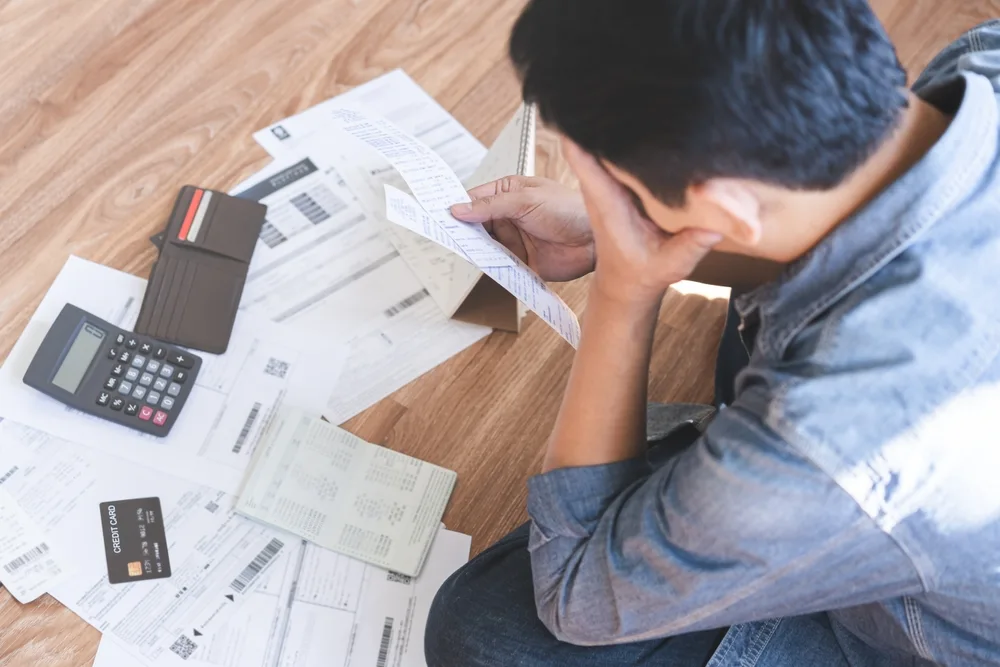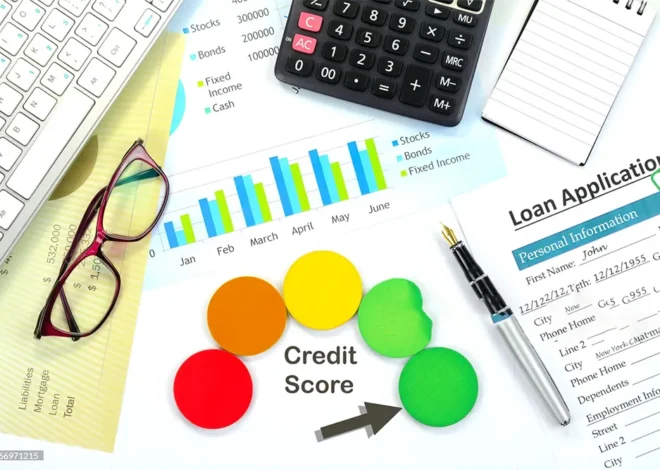
How to Improve Credit Score After Bankruptcy: A Step-by-Step Guide
Filing for bankruptcy can feel like an overwhelming financial setback, but it doesn’t have to be the end of your financial journey. Rebuilding your credit after bankruptcy is not only possible—it’s essential to improving your financial future. With patience, diligence, and strategic actions, you can steadily raise your credit score, even reaching benchmarks like 700 or 800 in time. This guide will walk you through the necessary steps how to improve credit score after bankruptcy.
Essential Steps on How To Improve Credit Score After Bankruptcy
1. Understand Your Bankruptcy Type
Before you begin rebuilding your credit, it’s important to understand the type of bankruptcy you filed—Chapter 7 or Chapter 13. Both types have different impacts on your credit report and how long they stay on your record.
- Chapter 7 Bankruptcy: Remains on your credit report for 10 years and involves liquidating assets to pay off debts.
- Chapter 13 Bankruptcy: Remains for 7 years, and it involves creating a repayment plan for some of your debts.
Knowing the nuances of your bankruptcy can help tailor your approach to credit rebuilding.
2. Review Your Credit Report Thoroughly
The first practical step to improving your credit score is to obtain copies of your credit report from the three major credit bureaus: Experian, TransUnion, and Equifax. After bankruptcy, it’s crucial to review these reports for any errors or inaccuracies that could further lower your score.
Look out for:
- Incorrect personal information
- Incorrect bankruptcy filing date
- Debts that were discharged in bankruptcy but still appear as active
If you spot any inaccuracies, dispute them with the credit bureaus immediately to ensure your credit report is accurate. To repair your credit quickly read this article on How to repair credit score quickly.
3. Create a Budget and Stick to It
Post-bankruptcy, one of the best habits you can cultivate is disciplined budgeting. Creating a budget that prioritizes necessary expenses and keeps discretionary spending in check will help ensure you never fall into the debt traps that lead to bankruptcy.
Key budgeting tips include:
- Track all your income and expenses.
- Set aside emergency savings.
- Avoid unnecessary purchases and impulse spending.
A budget will help you manage your finances and provide a clear path toward building good financial habits.
4. Get a Secured Credit Card
Secured credit cards are one of the most effective tools for rebuilding your credit. A secured credit card requires you to deposit money upfront, which serves as your credit limit. Using this type of card responsibly can demonstrate to credit bureaus that you’re able to manage credit again.
Best Practices for Using a Secured Credit Card:
- Pay the balance in full each month to avoid interest.
- Keep your credit utilization rate low (ideally under 30% of your credit limit).
- Make payments on time, every time.
With consistent responsible usage, secured credit cards can help improve your score within 6-12 months.
5. Become an Authorized User
Another strategy to improve your credit score after bankruptcy is becoming an authorized user on someone else’s credit card. If a family member or trusted friend with good credit adds you as an authorized user, their positive credit history will reflect on your credit report.
However, this should only be done if the primary cardholder manages their credit well, as any negative activity will also appear on your report.
6. Pay Bills on Time
Payment history is the single most significant factor in determining your credit score, accounting for 35% of your total score. Therefore, making on-time payments on any remaining or new accounts is critical after bankruptcy.
- Automate payments where possible to avoid late payments.
- Set up reminders to ensure you don’t miss any due dates.
Whether it’s rent, utilities, or your secured credit card bill, every timely payment builds your creditworthiness.
7. Keep Credit Utilization Low
Credit utilization, or how much of your available credit you’re using at any given time, accounts for 30% of your credit score. To boost your score, aim to keep your utilization rate below 30%. For example, if your credit limit is $1,000, try to use no more than $300 of it.
If you have a secured credit card with a low limit, focus on small purchases like groceries or utility bills, and pay them off quickly to keep your utilization low.
8. Rebuild Credit with Installment Loans
While credit cards are helpful, having a mix of credit types (instalment loans and revolving credit) can also improve your score. Consider taking out a small personal loan or an auto loan—provided you’re in a financial position to manage it responsibly.
A credit-builder loan is another excellent option. These small, secured loans are designed to help people build or rebuild their credit. Your payments are reported to the credit bureaus, which can steadily boost your score over time.
9. Monitor Your Credit Regularly
Monitoring your credit score regularly allows you to track your progress and stay aware of any potential issues. Many credit card companies and free services offer credit monitoring that gives you real-time updates on your score.
By regularly checking your credit, you can:
- Spot any errors early.
- Stay motivated by tracking your progress.
- Identify any negative actions that could be harming your score.
10. Be Patient and Consistent
Improving your credit score after bankruptcy takes time. Depending on the severity of your bankruptcy and how diligent you are about rebuilding, it can take 18 months to several years to see significant progress.
Here are some benchmarks to aim for:
- Within 12-24 months: You can expect to rebuild your score to the high 500s or low 600s.
- After 3-5 years: With consistent effort, you can reach a credit score of 700 or higher.
- Within 7-10 years: You can potentially achieve an excellent credit score of 800, depending on your financial habits.
By sticking to good credit practices and remaining patient, you’ll see improvement over time.
Conclusion
Rebuilding your credit after bankruptcy is a gradual process, but you can significantly improve your credit score with consistent effort and smart financial decisions. Begin by reviewing your credit report, setting a budget, and using secured credit options to rebuild your financial reputation. Over time, with persistence and responsible behavior, reaching a credit score of 700 or even 800 is achievable.
Frequently Asked Questions (FAQs)
Q. How do you get a 700 credit score after bankruptcy?
Getting a 700 credit score after bankruptcy requires a combination of factors: paying bills on time, keeping your credit utilization low, using secured credit cards or credit-builder loans responsibly, and avoiding any new debt. It typically takes 3-5 years of consistent effort to reach this milestone.
Q. How long does it take to rebuild your credit after bankruptcy?
Rebuilding your credit after bankruptcy can take 18 months to 7 years, depending on your financial habits. If you adopt responsible practices like timely payments, low credit utilization, and smart credit management, you can see steady improvement within the first two years.
Q. How to get an 800 credit score after bankruptcy?
To achieve an 800 credit score after bankruptcy, you’ll need to maintain excellent credit habits for several years. This includes paying all bills on time, using a variety of credit accounts responsibly, keeping your credit utilization low, and monitoring your credit report for any errors. Reaching an 800 credit score typically takes 7-10 years after bankruptcy.
Q. How do I build my credit score after bankruptcy?
Building your credit after bankruptcy involves obtaining secured credit cards, using credit-builder loans, paying all bills on time, and keeping your credit utilization low. Regular monitoring of your credit score and maintaining patience and consistency will yield results.
Q. Is it possible to buy a house after bankruptcy?
Yes, it’s possible to buy a house after bankruptcy. Depending on the type of bankruptcy filed, you’ll need to wait for a specific period (typically 2-4 years) before qualifying for a mortgage. In the meantime, focus on rebuilding your credit and saving for a down payment.
Q. Can you improve your credit score during bankruptcy?
It’s difficult to improve your credit score during bankruptcy proceedings. However, once your bankruptcy is discharged, you can begin rebuilding immediately by using credit responsibly, making timely payments, and avoiding excessive debt.











